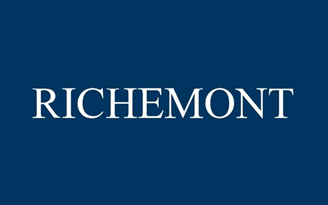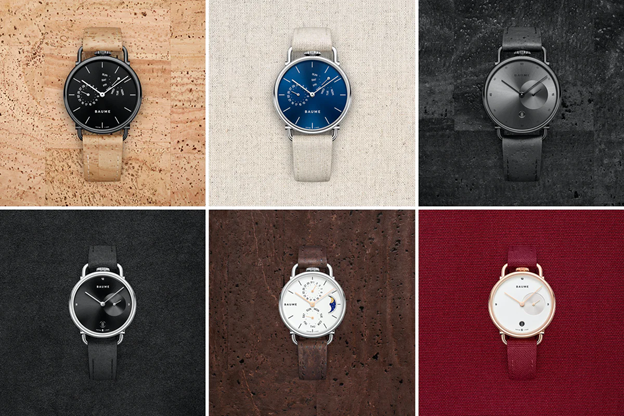This prestigious company’s shift to “the lower end” enabled it to reach the masses. How did that happen? Find out here! [Monday: Marketing Marvels]

Cartier.
Piaget.
Van Cleef & Arpels.
A lot of us know these are luxury brands.
… but do you also know that they’re all under one parent company?
If you’re thinking about what corporation we’re referring to, it’s one whose name is as RICH and luxurious as the brands it handles.
That company is none other than…
Richemont SA!

Richemont is a Switzerland-based luxury goods company founded in 1988 by South African businessman Johann Rupert.
Through its 25 Maisons or brands, the company manufactures and sells high-quality watches, leather goods, pens, firearms, clothes, and other accessories.
[Maisons: A French word that means “house,” “home,” or “place.” When used in business, especially in fashion, the term means “a business/fashion house or firm.”
Richemont uses this word to communicate that its brands are home to “excellent jewelry, watches, and other accessories” and are also known for their distinctive heritage, craftsmanship, and creativity.]
Aside from the brands mentioned above, these Maisons include the following:
- Montblanc
- Peter Millar
- Purdey
- Dunhill
- Buccellati
- Serapian Milano
- TheOutnet
Richemont’s most celebrated brand is Cartier, one of the leading manufacturers of luxury watches and jewelry.

A Shift to “The Lower End”
Unlike other companies, Richemont’s watch brands have always been in the “upper mid-range” to “prestigious and luxury range” classifications.
The closest thing to an “entry level” offering is the company’s Baume & Mercier brand, whose average selling price is between USD 2,000 and USD 5,000―still expensive for most consumers.

So… what did Richemont do to appeal to a wider range of consumers?
It launched “basic range” watches with its newest brand, Baume, in 2018!
Note: Do not confuse Baume with Baume & Mercier. These are two different brands under Richemont.
The company internally developed Baume to grab a share of the “millennial watch market.” Since Richemont knew that not all millennials have the financial capability to buy luxury watches, it based the brand’s selling price on what the consumer segment could afford.

How did Richemont market these watches to consumers?
By including words like “Environmentally Responsible” and “Customizable” in Baume’s branding and marketing copies―topics that most millennials are drawn to nowadays!
The brand also appealed to consumers’ mindsets by committing to not use any precious metals, stones, or animal materials in its products.
Instead, the watches would only use upcycled, recycled, and natural materials. That means you won’t see a gold Baume timepiece with diamond hour markers and a leather strap.
Richemont announced that the selling price for the new brand’s products will start at USD 500. Pretty much affordable compared to the price of other brands’ watches!
Aside from the launch of Baume, Richemont leveled up its investments in the e-commerce sector following the acquisition of online retail companies, Watchfinder.co.uk Ltd. and Yoox Net-a-Porter Group S.p.A. in 2018.Established in 2002 in the UK, Watchfinder is a platform to research, buy, and sell premium pre-owned watches online and through its 7 boutiques.

The retail company is known for its efficient customer service center that gets consumers’ inquiries and concerns addressed in a timely manner.
By acquiring Watchfinder, Richemont did not only gain an edge in the online world but also increased its chances of reaching more customers, particularly those in the UK.
According to Johann Rupert, the chairman of Richemont,
“Watchfinder’s founders foresaw the need for an online marketplace for premium pre-owned timepieces. Watch enthusiasts themselves, they established Watchfinder to provide excellence in customer experience. We believe there are substantial opportunities to help grow the company further. Today, Watchfinder operates both as an ‘online’ and ‘offline’ business in a complementary, growing, and still relatively unstructured segment of the industry.”
Meanwhile, Richemont’s acquisition of Yoox Net-A-Porter (YNAP) further solidified the company’s position in the online retail space.

One of the things Richemont achieved with the help of this platform?
Tapping into the Chinese market!
With a strategic partnership with e-commerce company Alibaba, Richemont brought all of its retail offerings on YNAP to Chinese consumers.
In case you’re wondering how this became possible…
Alibaba provided technology infrastructure, marketing support, and payment logistics to power the launch of 2 new apps, Net-a-Porter and Mr. Porter.
These apps also opened online stores within Alibaba’s Tmall Luxury Pavilion to further expand Richemont and YNAP’s reach in the Chinese market.
Through these online retail platforms, Richemont was able to establish its presence in e-commerce and promote its brands to a lot of consumers around the world.
In the past five years, Richemont SA has recorded revenues of:
- CHF 11.5 billion in 2017
- CHF 12.5 billion in 2018
- CHF 16.0 billion in 2019
- CHF 15.6 billion in 2020
- CHF 14.1 billion in 2021
*Richemont SA reports full-year earnings every March 31, the end of its financial year.
By looking at these numbers, you’ll see that the Baume brand launch and the acquisition of Watchfinder and YNAP yielded good results as the company recorded a higher revenue in 2018 than in 2017.
Richemont SA’s Earning Power: Valens Research vs. As-reported numbers
Richemont SA (CFR:CHE) makes for a great case study that we come back to regularly. One great reason?
The company has proven itself to be a better earning power generator than investors might think.
So, how well has Richemont SA been growing its business in the past years?
The research doesn’t lie—nor do the results. Earning power (the blue bars) continues to show results higher on average than what traditional databases show.

The blue bars in the chart above represent Richemont SA’s earning power (Uniform Return On Assets). Richemont SA has seen generally robust profitability. From 2006-2008, Uniform ROA improved from 14% to 19%, before declining to 12% in 2010. Thereafter, Uniform ROA expanded until it reached a peak of 22% in 2012. However, it compressed to its lowest level of 9% in 2020. Then, Uniform ROA recovered to 12% in 2021.
The global ROA is just 6%.
The orange bars are the company’s as-reported financial information. If you relied on these numbers, you will see a company with understated profitability. As-reported ROA (return on assets, a measure of earning power) only ranged from 3% to 12% in the past sixteen years. Its as-reported ROA in 2021 was only at 3%, which is 4 times lower than its Uniform ROA in 2021.
That’s what you’ll see in Yahoo Finance, Google Finance, and most other databases.
The company’s stock price also performed better than the rest of the stock market over the decade, which we can see in the blue line in the chart below. Its returns have been well above the market.

The numbers show that Richemont SA has been doing well and making a profit.
The company’s mission involves 2 things:
- To nurture the distinctive craftsmanship, innovative spirit, and creative inspiration of its employees.
- To create long-term value for stakeholders―customers, colleagues, investors, partners, and a wider society.
Richemont aims to achieve its mission by growing its Maisons through “unique and timeless” designs, creations, and experiences…
… and protecting the business’ heritage in quality and craftsmanship while innovating its products.
Through these, Richemont and its brands believe they’ll be able to unleash their full potential and offer only high-quality products to consumers in the long term.
About The Dynamic Marketing Communiqué’s
“Monday Marketing Marvels”
Too often, industry experts and the marketing press sing the praises of some company’s marketing strategy.
…Only for the audience to later find out that their product was a flop, or worse, that the company went bankrupt.
The true ROI in marketing can’t be separated from the business as a whole.
What good is a marketing case study if one can’t prove that the company’s efforts actually paid off?
At the end of the day, either the entire business is successful or it isn’t. And the role of marketing is always paramount to that success.
Every Monday, we publish a case study that highlights the world’s greatest marketing strategies.
However, the difference between our case studies and the numerous ones out there, is that we will always make certain that the firm really did generate and demonstrate earning power worthy of study in the first place (compliments of Valens Research’s finance group).
By looking at the true earnings of a company, we can now rely on those successful businesses to get tips and insights on what they did right.
We’ll also study the greatest marketing fails and analyze what they did wrong, or what they needed to improve on. We all make our mistakes, but better we learn from others’ mistakes—and earlier, rather than later.
Hope you found this week’s marketing marvel interesting and helpful.
Stay tuned for next week’s Monday Marketing Marvels!
Cheers,
Kyle Yu
Head of Marketing
Valens Dynamic Marketing Capabilities
Powered by Valens Research
www.valens-research.com




